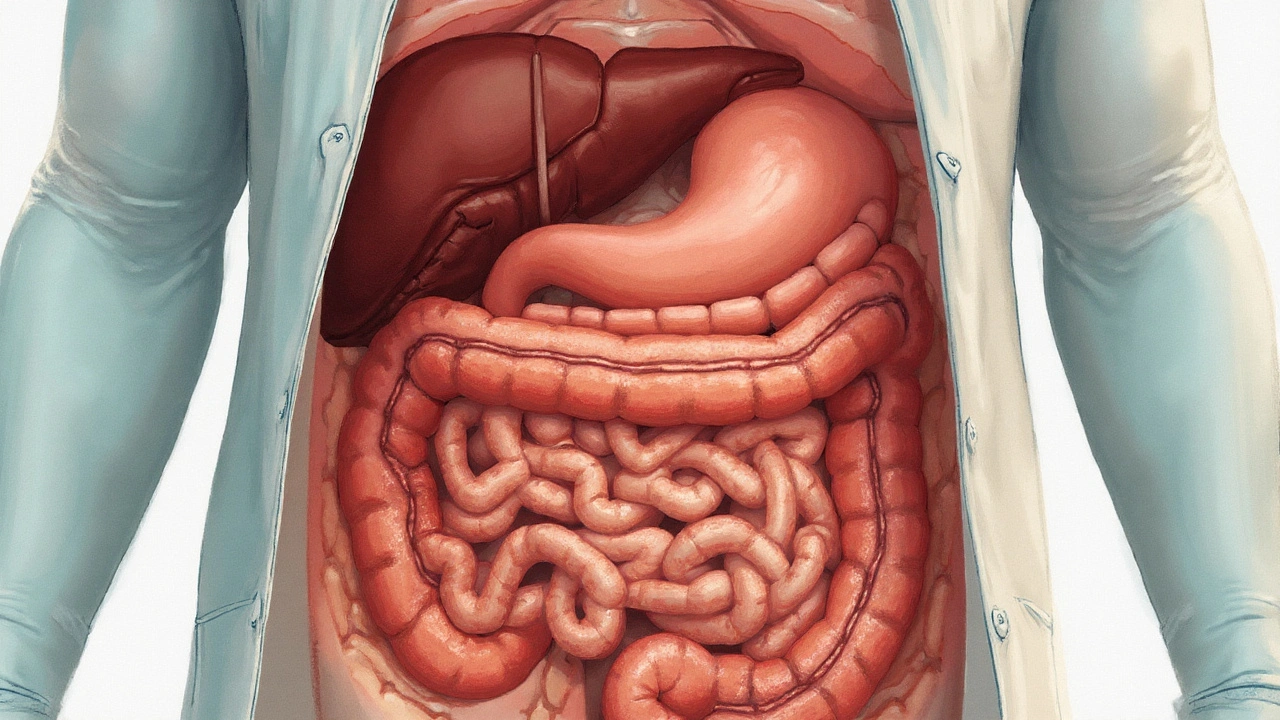If you’ve ever heard doctors talk about a blocked pancreatic duct, you might wonder why it matters. The pancreatic duct is the tiny tube that carries digestive juices from the pancreas to the small intestine. When something plugs that tube, the juice can’t flow, and the pancreas starts to hurt itself. This can lead to pain, nausea, and even pancreatitis.
In most cases, the blockage happens because of a stone, a scar, or a growth inside the duct. Alcohol abuse, gallstones, and high‑fat diets raise the risk. Even a small change in your diet or a sudden weight loss can tip the balance. The good news? Early detection and simple lifestyle tweaks can keep the problem from getting worse.
Think of the duct like a straw. If you try to sip a thick milkshake through a narrow straw, it clogs. In the pancreas, the “milkshake” is a mix of enzymes and fluids that help break down food. Stones made of calcium or protein can form when this fluid gets too thick. Chronic inflammation, often from heavy drinking, can cause scar tissue that narrows the passage.
Another common culprit is a tumor that grows inside or near the duct. While many tumors are cancerous, some are benign and still cause a real blockage. Your doctor may also see a blockage if a gallstone slips into the duct from the bile system.
First step: see a doctor if you have persistent upper‑abdominal pain, especially after meals, or if you notice yellowing of the skin (jaundice). Blood tests that check enzyme levels (amylase, lipase) can hint at a problem. Imaging is the real game‑changer. An abdominal ultrasound can spot big stones, while a CT scan or MRI gives a clearer picture of the duct’s interior.
If a stone is the cause, doctors often use an endoscopic procedure called ERCP (endoscopic retrograde cholangiopancreatography). During ERCP, a tiny tube goes through your mouth to the duodenum, and the doctor can either shave the stone away or place a tiny stent to keep the duct open.
When scar tissue is the issue, the same ERCP can help stretch the duct or insert a stent. In some cases, surgery is needed to remove a tumor or bypass the blocked segment. After any procedure, lifestyle changes matter. Cut back on alcohol, eat a low‑fat diet, stay hydrated, and keep a healthy weight.
Even if you’re not ready for a doctor’s visit, you can watch for warning signs. Persistent pain, unexplained weight loss, or vomiting after meals deserve attention. Early action can keep the pancreas working smoothly and prevent long‑term damage.
Bottom line: a pancreatic duct blockage is often treatable if you catch it early. Knowing the symptoms, getting the right tests, and following up with proper care can make a big difference in how you feel day to day.

Explore how pancreatic duct blockage disrupts digestion, the signs to watch for, diagnostic tools, and effective treatments to restore gut health.